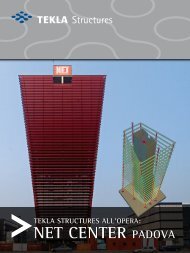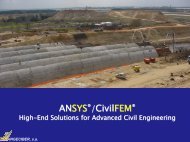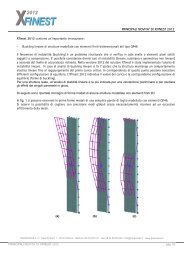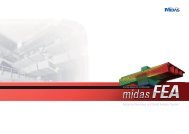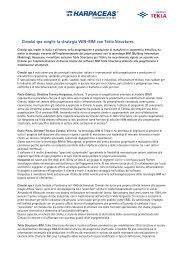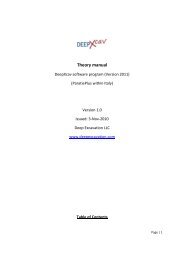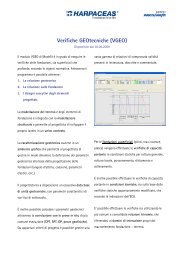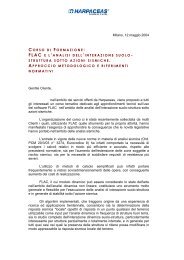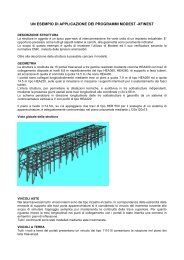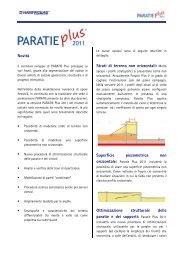THEORETICAL BACKGROUND OF MASONRY MODEL
THEORETICAL BACKGROUND OF MASONRY MODEL
THEORETICAL BACKGROUND OF MASONRY MODEL
You also want an ePaper? Increase the reach of your titles
YUMPU automatically turns print PDFs into web optimized ePapers that Google loves.
2. Homogenization Techniques in Masonry Structures<br />
Masonry structures can be numerically analyzed if an accurate stress-strain relationship is employed for<br />
each constituent material and each constituent material is then separated individually. However, a threedimension-analysis<br />
of a masonry structure involving even a very simple geometry would require a large<br />
number of elements and the nonlinear analysis of the structure would certainly be intractable. To overcome<br />
this computational difficulty, the orthotropic material properties proposed by Pande et al.5,6 can be<br />
introduced to model the masonry structure in the sense of an equivalent homogenized material. The<br />
equivalent material properties introduced in Pande et al. are based on a strain energy concept. The details<br />
of the procedure to obtain equivalent elastic parameters based on the homogenization technique are given in<br />
the following. The basic assumptions made to derive the equivalent material properties through the strain<br />
energy considerations are:<br />
1. Brick and mortar are perfectly bonded<br />
2. Head or bed mortar joints are assumed to be continuous<br />
The second assumption is necessary in the homogenization procedure and it has been shown7 that the<br />
assumption of continuous head joints instead of staggered joints, as they appear in practice, does not have<br />
any significant effect on the stress states of the constituent materials.<br />
Let the orthotropic material properties of the masonry panel be denoted by<br />
E<br />
x<br />
,<br />
E<br />
y<br />
,<br />
E<br />
z<br />
, ν<br />
xy<br />
, ν<br />
xz<br />
, ν<br />
yz<br />
,<br />
G<br />
xy<br />
,<br />
by<br />
G<br />
yz<br />
,<br />
G<br />
xz<br />
, Fig. 1. The stress/strain relationship of the homogenized masonry material is represented<br />
σ = ⎡ ⎣ D⎤<br />
⎦ ε<br />
(1)<br />
or<br />
5 G. N. Pande, B. Kralj, and J. Middleton. Analysis of the compressive strength of masonry given by the equation<br />
α<br />
( ′) ( )<br />
β<br />
k<br />
=<br />
b m . The Structural Engineer, 71:7-12, 1994.<br />
f K f f<br />
6 G. N. Pande, J. X. Liang, and J. Middleton. Equivalent elastic moduli for brick masonry. Comp. & Geotech., 8:243-265, 1989.<br />
7<br />
R. Luciano and E. Sacco. A damage model for masonry structures. Eur. J. Mech., A/Solids, 17:285-303,1998.<br />
<strong>THEORETICAL</strong> <strong>BACKGROUND</strong> <strong>OF</strong> <strong>MASONRY</strong> <strong>MODEL</strong> page 2 / 20



